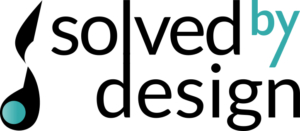WUD on Earth
Technology should enhance our lives, not add to our stress or cause danger through poor design or poor quality. User Experience professionals work to ensure that this technology is effective, efficient, satisfying and reliable by all people. Good usability techniques creates usable products, experiences and technology.
A usable product not only incorporates the end user but also the overarching product lifecycle, including what happens to a piece of technology when a person no longers uses it. Designing with the earth in mind creates a multifaceted client base. When a team designs a product, they should incorporate how the product can compliment, not harm our planet earth. Sustainablity should be a key element of a successful user experience.
Before scaring designers with cautionary tales, consider the benefits of seeing product design from a natural perspective. Biomimicry provides a good model for this, as it incorporates models from nature. These models provide some solutions that solve human challenges. The University of Akron incorporates insights from gecko skin into its development of polymers. The documentary ‘Creeping Garden’ exemplifies biomimicry of slime mold in developing human traffic patterns. Biomimicry proves that nature can provide more advantages to user experience than beautiful design.
Implications for design on the earth may be as intuitive as nature has taught us. Yet, with a revolution in the farming industry, biodynamics sets a beautiful example. Biodynamics views a farmed plot as a complete ecosystem; incorporating benefits of microorganisms as well as impacts of runoff from irrigation. As Mother Nature takes all living things into account, user experience professionals must view the big picture as a whole. Symbiotic relationships, such as ladybugs acting as a natural insecticide is another way that nature can teach us new problem solving methods. Understanding our relationship with nature can help us better understand our relationship with human products.
As we often see in product development, there is more than one user and client to consider during planning and development. Designing for a successful user experience is not any different. One can argue that in order for us to be sustainable, the earth must be considered as a stakeholder in the design industry. Successful UX is holistic and looks at solutions that improves all aspects of human experience.
Direct examples of how to include the earth at the round table in a design study, include broadening a situational analysis to add an E in a IMPCCC analysis ( Industry Market, Product, Consumer, Competitor, Company) for Environment. Viewing the complete product lifecycle from cradle to grave can include: sourcing material locally while also considering how the product can be recycled or reused. This includes an acknowledgment that earth’s resources are limited.
Acknowledging the earth as a facet of human experience can inspire planning, design and development. A usability view plans to reuse a coke bottles for . Students design for car intake valves use carbon to filter air. These are examples of big and small products which incorporate the environment into design. But as an experience, a startup company confirms that user experience with a environmental edge means business. Shower City allows festivals attendees to stay clean while also addressing the water crisis in African countries. Taking into account Mother Nature in usability concepts has the ability to develop more well rounded products and experiences.












